
| Around Osorno |
Getting there
Puerto Octay (11km - 30m ascent - 30m descent)
|
|
|
|
||
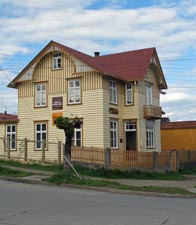 Casa Niklitschek |
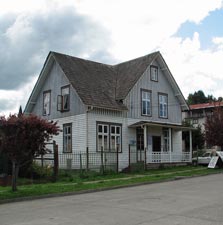 Casa Anazco Trujillo |
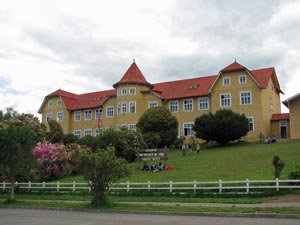 Colegio de Niñas San Miguel |
|
|
 Volcan Osorno (2652m) and its halo of cloud |
 Looking across the Centinela Peninsula to the volcanoes beyond |
 Nello y su amigo |
|
|
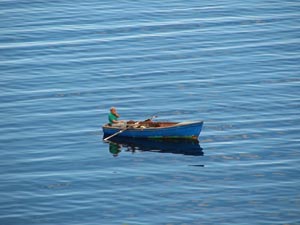 The solitary fisherman |
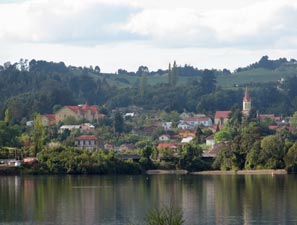 Puerto Octay |
|
|
||||
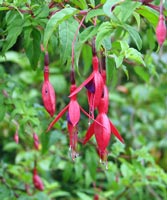 |
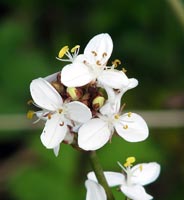 |
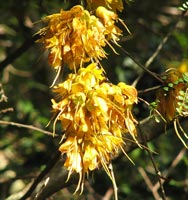 |
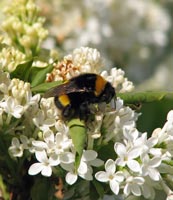 |
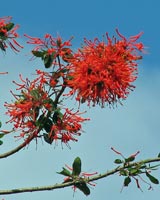 |
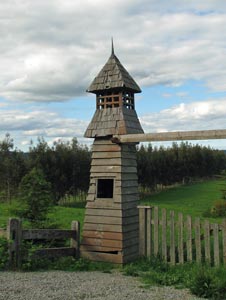 An example of the quaint rural architecture |
 Osorno landscape |
|
Every bend or rise offered new vistas of the magnificent Osorno, sometimes framed by small islets in the lake, sometimes by trees and green pastures, sometimes just rising impressively out of the water. Slowly the halo of cloud surrounding it thinned to reveal the perfect cone of Osorno in all the brilliance of its snow-covered whiteness. |
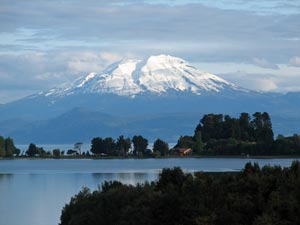 Volcan Calbuco (2003m) above the Centinela Peninsula |
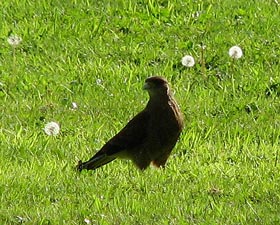 |
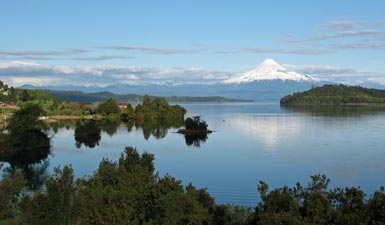 A panorama of Volcan Osorno and Lago Llanquihue |
Sendero Paso de la Desolacion (16km - 450m ascent - 950m descent) |
||
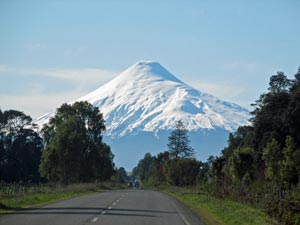 The road to Osorno |
Having been captivated by the striking cone of Volcan Osorno, we knew where our next walk would be, and our host Armin, told us about good day walk across the eastern saddle leading up to the the volcano as well as organising transport to get there. It was one those days where the sky was clear, the sun was just the right temperature and there was hardly a breath of wind - a perfect spring day in the south of Chile as we drove through the incredibly green countryside on the north shore of Lago Llanquihue to the starting point of our walk at the Rio Blanco, in the more open beech forest on the north side of the volcano. |
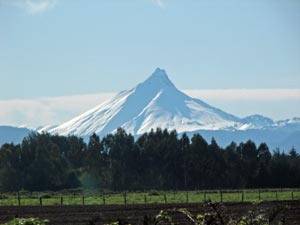 The curious asymmetry of Volcan Puntiagudo |
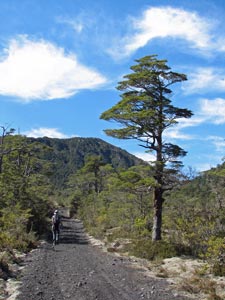 The track up the Rio Blanco to La Picada |
|
|
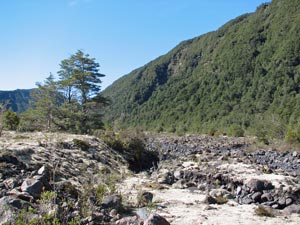 Dry bed of the Rio Blanco |
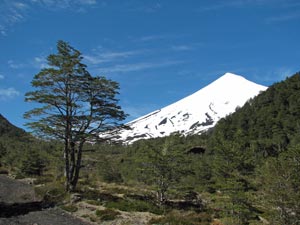 Volcan Osorno appears from behind the ridge |
|
|
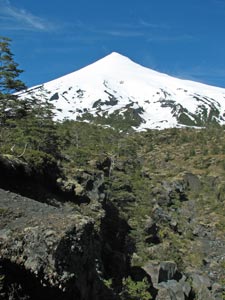 Looking up the lava gully toward Osorno |
|
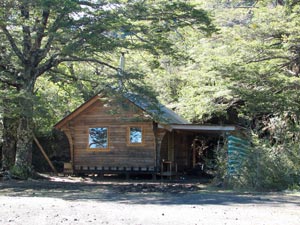 Refugio La Picada |
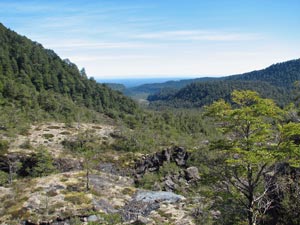 Looking back down the Rio Blanco Valley |
|
|
||
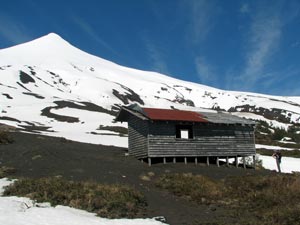 The old mountaineer's hut on Paso de la Desolacion |
 lava lizard |
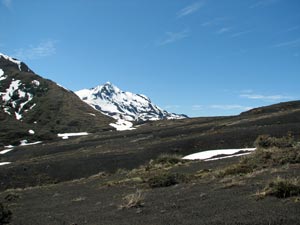 The barren cinder slopes that give the pass it's bleak name |
|
|
|
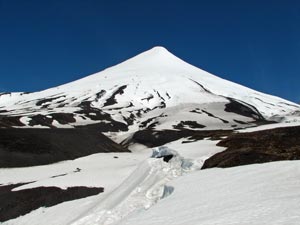 The stark monochrome of the eastern face of Osorno |
 In the distance, mighty Tronador (3484m) blocks the horizon |
|
|
||
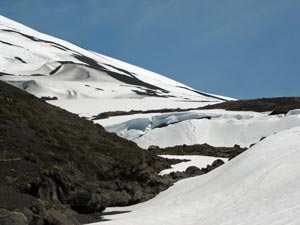 Eroded chasm in the lava slope |
 Coloured cinder cliffs of Cerro La Picada |
|
|
|
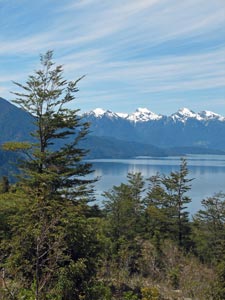 The beauty of beech |
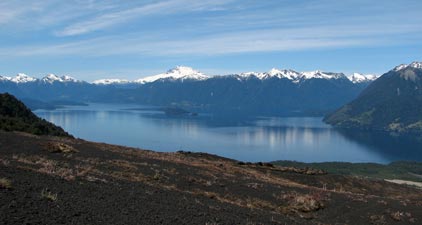 Panorama of Lago Todos los Santos |
|
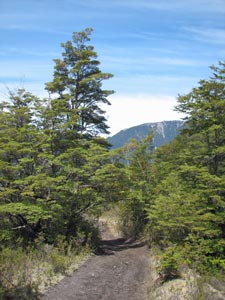 The forest reappears on the southern slopes |
|
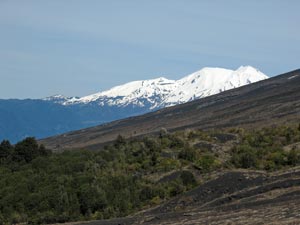 Looking across scrub and cinder slopes to Volcan Calbuco |
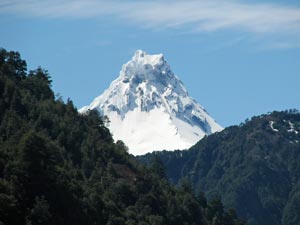 The snow- and ice-capped plug of Volcan Puntiagudo |
|
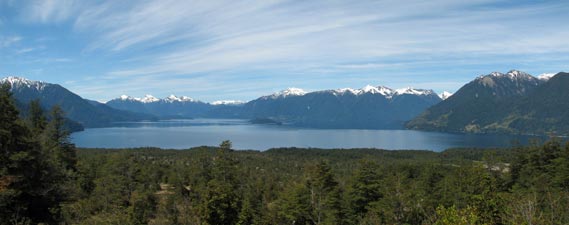 Early Spring at Lago Todos los Santos |
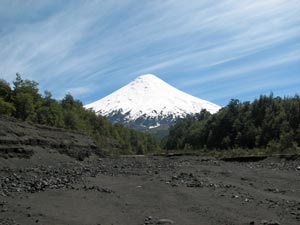 View of the southern face of Osorno from a wide erosion gully |
|
|
|||
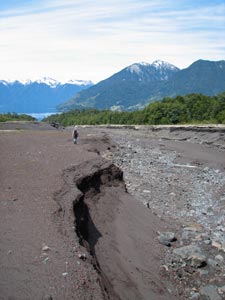 The loose scoria rim of an erosion gully |
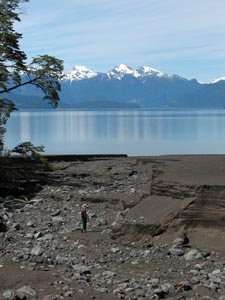 Heading down Zanjón Picada to the lake |
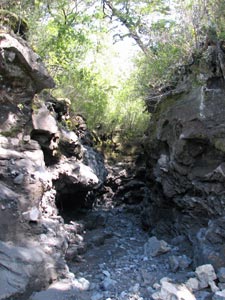 A deep washout in the cinder bed |
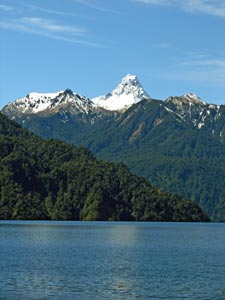 The shoreline of Lago Todos los Santos |
|
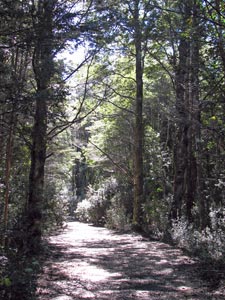 Track through the dense lakeside forest |
|
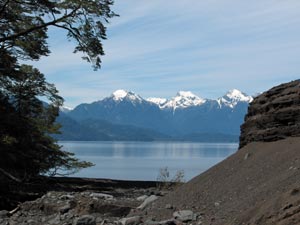 Volcanic cinders, clear blue water and snow-capped peaks |
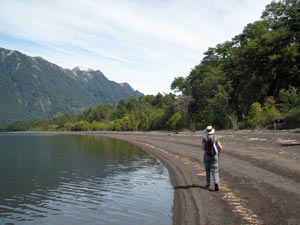 Strolling along the black sand beach |
|
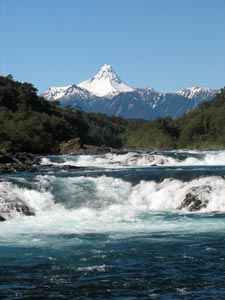 Rapids of Rio Petrohue overlooked by Puntiagudo
|
|
 The impressive Saltos de Petrohue 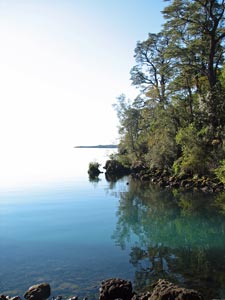 Lago Llanquihue - where water and sky merge |
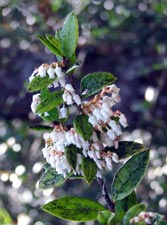 A cluster of snowbells |
|
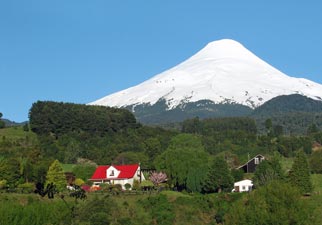 The vivid colours of the Chilean countryside |
    |